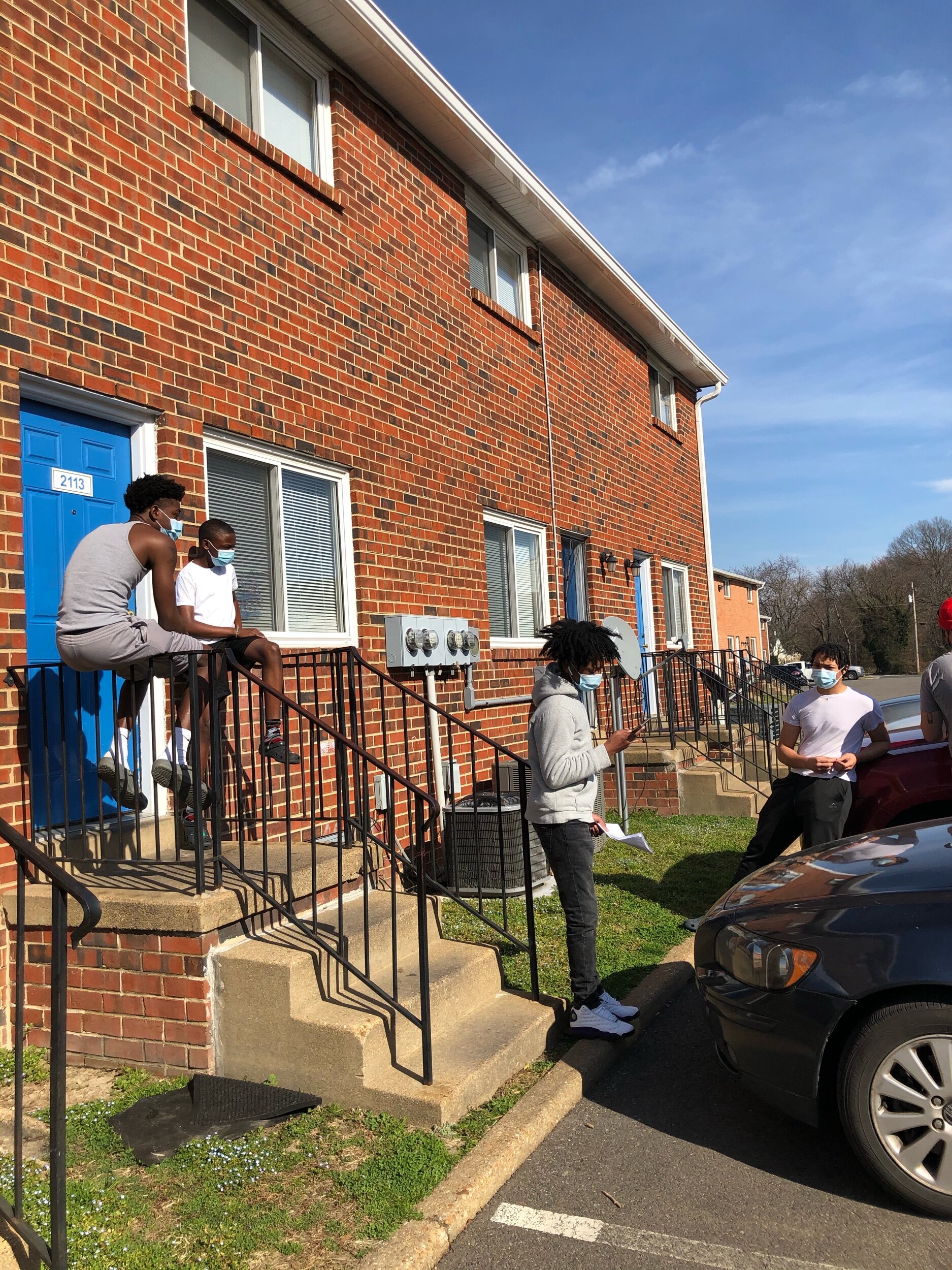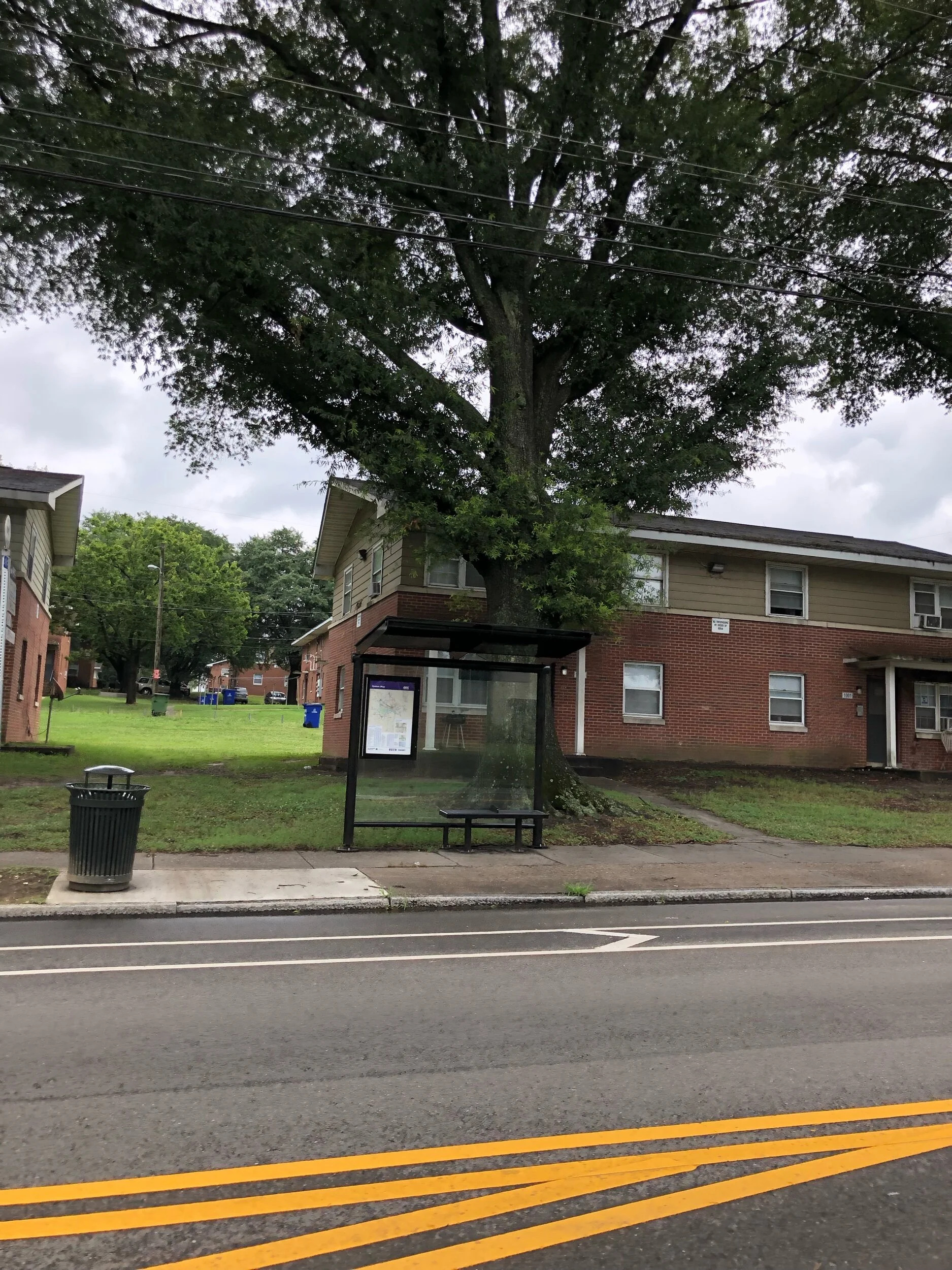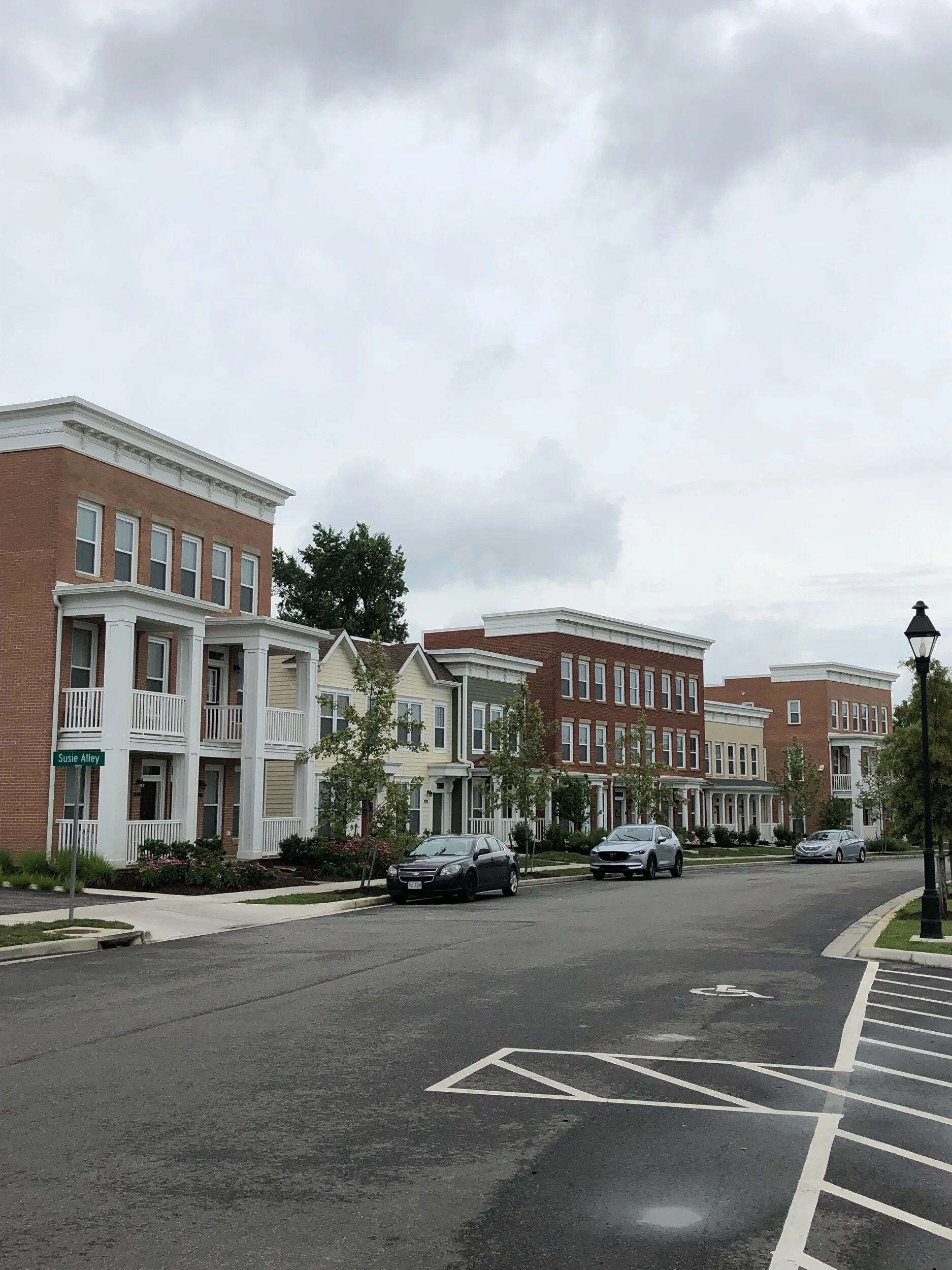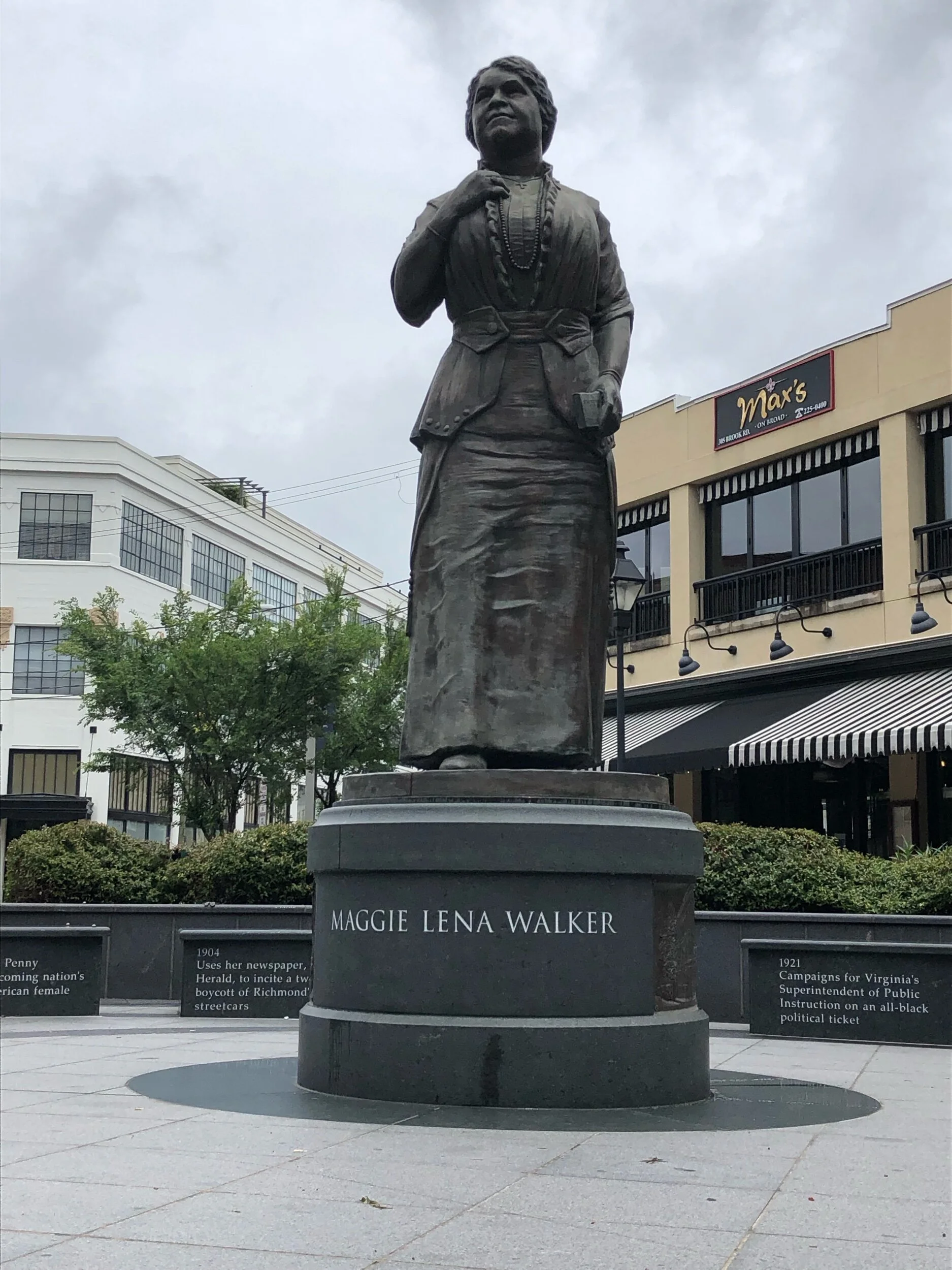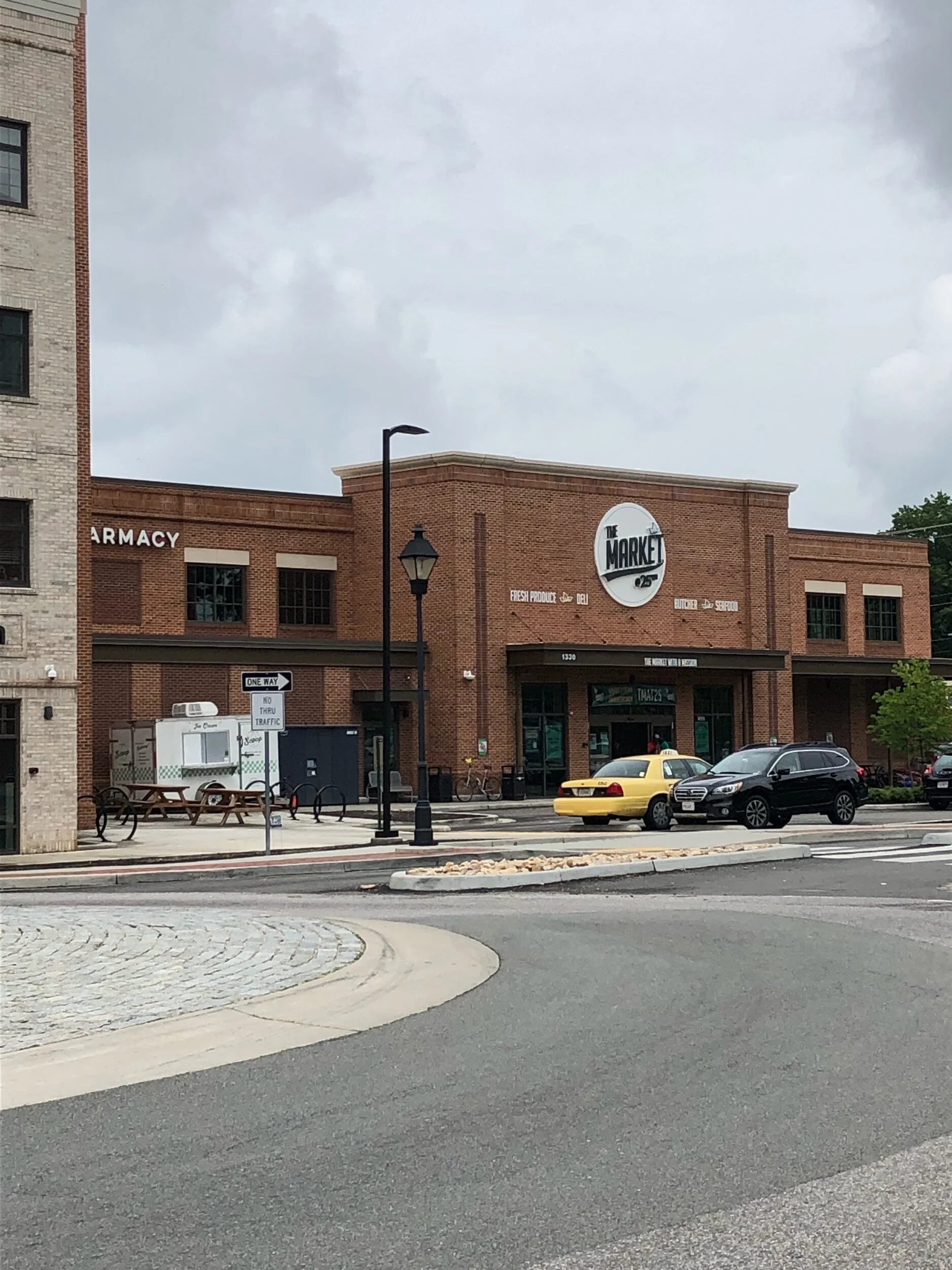The foundation for a person's life starts with housing. Housing dictates your accessibility to food, proximity to jobs and transportation, the schools you attend, public spaces that surround you, the climate that you will inhabit, and the safety of your neighborhood. In Richmond, structural and institutional racism has perpetuated social injustices that have devastated communities. Decades of policies and actions has led to a dramatic level of concentrated poverty in the East End. Public housing structures have kept a majority Black population living well below the poverty line in places like Mosby Court, Fairfield Court, or Creighton Court. While public, private, and nonprofit organizations look to redevelop and revitalize the East End, the structures of public housing seem destined to fall.
Richmond Cycling Corps works with youth that live in public housing. Cycling is our platform for change.
In their place likely will be mixed-use and mixed-income buildings. The redevelopment can work towards combating the hyper-concentrated level of poverty that was created in the East End. Other projects look to add more affordable housing in the East End and throughout Richmond as the need continues to find more housing for low-income citizens. However, the solution for the residents does not sound as simple as the solutions for the structures. Structures can be built, destroyed, revitalized, or moved. People have lives and memories and family and needs. So where will those needs be met and where will Richmond continue to fail a population that it has already tried to leave behind.
Hyper-Concentrated Poverty
Richmond now has the sixth-highest concentration of public housing for cities with populations exceeding 200,000 [1]. The start of Richmond’s housing projects can be traced back to the New Deal in the 1930s when The Home Owners’ Loan Corporation (HOLC) was created. HOLC was trying to assist homeowners from facing foreclosure by offering refinancing. The problem was, this also started a process of color coding neighborhoods as a way of signaling less than ideal financial stability. This process led to redlining throughout the country and here in Richmond, resulting in the East End being covered in red. Redlining was done to try and assess the level of risk for banks making real estate loans. Areas with predominantly African American residents or with older or poorer housing were consistently given the hazardous rating and colored red.
The policies of redlining were made illegal by The Federal Home Mortgage Disclosure Act in 1975 and Community Reinvestment Act in 1977 [1]. As homeownership is a primary vehicle for building wealth, the procedures of redlining worked towards widening the wealth gap. The disparities in homeownership in Richmond today show that 38% of African Americans own their homes compared to 53% of whites.
In 1940 the Richmond City Council created the Richmond Redevelopment Housing Authority (RRHA) to assist in providing housing for the poor. In 1941, the RRHA designated the first 297 units of federally subsidized public housing units. The housing project Gilpin Court was built for African American families.
After delays, the next public housing approval was in 1950, with 504 units for African American families in Creighton Court and 402 units for white families in the Southside at Hillside Court. Through 1964, the housing authority designated public housing projects by race [1].
Three more housing projects would follow; all in the East End. Whitcomb Court and Fairfield Court in 1958, and Mosby Court in 1962. This would bring another 1,848 units of public housing to an approximate one-mile radius [2].
Expanding City
During the construction of housing projects that predominantly housed Black residents, other housing was being destroyed by the construction of new roads. Nearly 1,000 homes were destroyed in the historical district of Jackson Ward for the construction of the Richmond-Petersburg Turnpike, now I-95, which opened in 1958 [1]. Jackson Ward was the largest African American community in Richmond. The neighborhood was cut in half and 7,000 people, which represented 10% of the city’s African American population, were displaced.
In March 1971, after years of trying to acquire more land from surrounding counties, the Virginia General Assembly prohibited Richmond from seeking to annex any more land [1]. Without new land for development, the population of Richmond remained static and even lost residents while surrounding counties grew rapidly. This outward growth had many domino effects as it pulled jobs, tax base, and residents away from the city of Richmond. Over the years 1950-1980, the city of Richmond held at near the same level of residents while Henrico County more than tripled and Chesterfield County more than quadrupled.
With residents more spread out, municipalities had to spend more on roads. So between 1984 and 2004, state and local governments spent over one billion dollars on new superhighways throughout Richmond [1]. This investment went to increasing property values in the suburban counties and it surrounded the East End by highways. Transportation within the city was not seeing similar spending as the suburbs continued to grow and the city provided only a small subsidy for the bus line within the city [1]. By 2010, a large number of entry level jobs had moved outside the perimeter of the bus lines while 19% of households in Richmond did not have a car [1].
Bus stop in Mosby Court.
In 2011, Mayor Dwight C. Jones appointed a commission tasked with finding solutions for reducing poverty. At the time, the City of Richmond had a poverty rate of 25.3% or nearly twice the national average of 13.8%. In the East End, the median household income was below the poverty line and the unemployment rate ranged from 22% to 60% [1]. The commission found that the strongest single predictor of poverty was employment status. Therefore one of the commission's five high-impact policy actions was to improve the transit system to allow for more employment opportunities being accessible to Richmond’s low-income residents. A 2011 study published by The Brookings Institution, found that Richmond ranked 95 out of 100 cities in “access to transit”.
The Greater Richmond Transit Company (GRTC) had been running a bus service in Richmond since 1949. GRTC finally began service to Chesterfield County in 1973 and then began service within Henrico in 1975. In June 2018, GRTC began a $65 million infrastructure project to improve the overall systems in Richmond. Part of the redesign was to make low-income and minority populations among the primary beneficiaries. According to a 2020 annual report, nearly 80% of the riders using GRTC have a household income under $50,000 per year. In September 2018, GRTC expanded its services in Henrico County to include nights and weekends.
More Roads, More Problems
The redlined neighborhoods throughout the 1930s show not only a pattern of poverty today, but also a pattern of increased heat exposure. On average redlined neighborhoods are 5 degrees hotter in the summer and some cities see the differences up to 12 degrees. The rise in temperatures comes from multiple factors from consistently having fewer trees and green spaces to the increased rate of asphalt or nearby highways that absorb and radiate heat. Heat-related issues including heat-related deaths and illness disproportionately affect African Americans living in cities across the United States.
In 2015, Richmond was called the asthma capital of America due to pollution, particulates, and poverty that impacts both housing and school buildings. Richmond's child poverty rate was at 39% and that number rose up to 75% in the core of the East End [2]. The public schools today are more racially segregated than they were in 1970 and are now segregated by race and income [1].
In Richmond, only 6% of the land is dedicated for green space, where the national average is 15%.. In 2020, the city announced the goal of ensuring everyone in the city lived within a 10-minute walk to a park. At the time more than 51,000 people in Richmond were unable to live within that proximity of a green space. Capital Trees is one of the partners the city has chosen to help assist the creation of more green spaces. Capital Trees is a nonprofit that looks to create a greener and more livable city.
Path Forward
Current Richmond Mayor Levar Stoney wrote that “marginalized residents have historically been denied access to housing choice, they continue to suffer from inequitable access to nutritious foods, employment, wealth-building opportunities, and a high quality of life”. In laying out a plan for an equitable future for Richmond, Mayor Stoney focuses on the need of nonprofit organizations.
Armstrong Renaissance, the new mixed-income housing units built on the old Armstrong High School site.
In Mayor Stoney’s “One Richmond: An Equitable Affordable Housing Plan” released in September 2020, he recommends policy changes regarding public housing so that buildings are transformed into mixed-income communities of choice. Also within his plan, Mayor Stoney stated seven new program initiatives. Of the seven, five of the programs reference the need to partner with nonprofit organizations on projects.
Currently the redevelopment of Creighton Court is underway. The old Armstrong High School was developed as a mixed-income building that opened in 2020, 16 years after the land was vacated. The project was a partnership of RRHA and Congress For The New Urbanism (CNU). CNU is a national nonprofit headquartered in Washington, DC that has three key goals: to diversify neighborhoods, to design for climate change, and to legalize walkable places.
The Maggie Walker Community Land Trust is named after Maggie Lena Walker, a community and business leader in Richmond.
On May 28, 2021, a deal was reached with the Maggie Walker Community Land Trust to convey 15 parcels here in Richmond to the local nonprofit for only $15. The 15 parcels are likely to produce more than 15 single family homes. This follows nearly 40 other properties that the city has conveyed since 2018.
Nonprofits are in a unique place to solve the housing affordability issues as opposed to the public or private sectors. Nonprofits could not compete if they were not getting the land from the city. So with the city giving the land to nonprofits for only court filing costs, the housing is able to stay affordable not only upon the first sale but future sales. Whereas private acquiring of land means that the land price will be instantly heightened to a number that could price out the next owner.
While most housing and redevelopment nonprofits in Richmond do not solely serve the East End, Urban Hope is an affordable housing nonprofit focused on the East End. Urban Hope offers residents the opportunity for both affordable housing rentals and the ability for homeownership. Many other nonprofits are working to create more affordable housing for low-income residents of the East End, but many of these organizations are assisting people that are closer to 50-100% of Area Median Income (AMI).
RRHA manages the 3,727 low-income housing units along with 3,502 housing choice vouchers while almost 4,000 families are on the waiting list for public housing. Of those on the waiting list, 82% are Black and 84.7% are earning less than 30% of the AMI. So while nonprofits are increasing housing affordability for low-income residents, there are many residents that are still in need of assistance. The median household income in 2018 for Richmond was $45,117, while the census tracts that encompassed Fairfield Court, Mosby Court, and Creighton Court in the East End had a median household income from $11,625 to $15,126. While Black people make up 47.5% of the population in Richmond, they represent 60.5% of the people living in poverty.
The housing choice voucher program, formerly known as Section 8, assists families with the housing market. Families are generally required to pay 30% of their monthly income towards rent and the U.S. Department of Housing and Urban Redevelopment (HUD) covers the remaining portions of their rent. Residents are not required to use the vouchers in subsidized housing projects. The voucher program is managed locally in Richmond by RRHA. While individuals can use the vouchers anywhere, private landlords are faced with the choice of receiving funding from HUD and following the regulations that are in place to obtain such funding or finding tenants that do not require a housing choice voucher.
Residents are also given 60 days to find housing once they have been given a voucher or risk losing it. This makes the housing vouchers hard to obtain, retain, and use. RRHA is currently considering policy changes to reduce limitations for people with past criminal convictions, as well as marijuana and alcohol policies. Also in the proposed plan would eliminate an existing lease provision that says current residents cannot have visitors that were previously evicted from public housing. Richmond also has the second-highest eviction rate in the country, having an 11.3% eviction rate of all renter households, compared to the national average of 2.3%. Increasing the number of vouchers would be a short-term option to increase housing affordability while other long-term plans are able to take shape.
Redevelopment of Creighton Court is part of RRHA’s Five Year Agency Plan for 2020-2024. The plan is to eliminate all of the public housing projects in the East End and replace them with mixed-income housing. In Creighton Court, 503 units will be demolished and replaced by 401 units that are not reserved for public housing recipients. As of today, RRHA is hoping to move people out of Creighton Court as they plan to break ground next year on the development planned for the property. To plan for the displacement of residents of the 503 units, a no-new-leasing-policy was previously instituted by RRHA. As of May 2021, 237 units of the 503 units in Creighton Court were empty. RRHA has been without a permanent CEO for nearly a year and has already acknowledged the search is taking longer than originally planned.
Previous plans argued for a one-to-one model of replacing public housing, but that idea has been changed to the idea of mixed-income buildings. The argument against one-for-one is the idea that it only moves public housing from one space to another. This idea of moving “sticks to bricks” will only be moving very low-income people into nicer homes, but not doing much to solve greater issues that perpetuate poverty. A mixed-income building would be housing not only very-low income people that have housing vouchers but other residents as well.
The other idea for new redevelopments is mixed-use buildings, or using spaces to be more than just one thing. While the current landscape of Creighton Court or Whitcomb Court or Fairfield Court or Mosby Court is housing surrounded by other housing surrounded by more housing, a mixed-use space would entail having retail shops or markets or stores in the same area.
2019 redevelopment project in the East End included The Market at 25th as an effort to improve access to healthy foods.
In 2019, a redevelopment project was opened in Church Hill that brought a market, a 42-unit apartment complex, a community resource center, a culinary school, and a VCU Health Hub. The Market at 25th offers the area of the East End a healthy food option that had not existed previously. Food deserts exist when residents have to travel more than a mile to have access to healthy foods. Prior to the Market at 25th, a lot of residents in the community would get their food from local gas stations. Along with providing food access, 90% of the employees are from Church Hill.
With the increased green spaces, access to healthy foods and retail shops, some fear that this contributes to people getting priced out of their current neighborhoods as gentrification accelerates. As housing gets redone and neighborhoods become more aesthetically pleasing, more people are ready to move in. This phenomenon can mean locals getting priced out of their own neighborhoods. Laura Lafayette, the Executive Director of Partnership for Housing Affordability (PHA), sees nonprofits both contributing to gentrification and also combating it. While affordable housing nonprofits assist homeownership and rental assistance, it also increases property values around the neighborhood. PHA focuses on changing public policy and finding solutions for developers to focus on affordable housing options. While PHA works towards changing public policy they also work with 70 partners to provide a Housing Resource Line. The resource line is a call center that assists with housing needs besides homelessness, including: evictions, legal support, homeownership, foreclosure prevention, and home repairs.
House under contract in Church Hill in East End South.
As of now the gentrification of the East End is happening from south to north. The average rent doubles from East End South to East End North and the median home value triples. While East End South has seen shifts in racial demographics, East End North, which is where the housing projects exist, has seen no greater than 2% change in demographics.
Wrapping Up
The condensed areas of public housing has led to residents being in a cycle of poverty that is hard to escape. The systems that were built here in Richmond were systematically segregating the city. The result is a subset of the city in the East End that now has 50% of Richmond’s poor. The concentrated nature of public housing has made the surrounding city more adept at harming residents than assisting residents. While the city is making progress, it still sits with a concentration of public housing that does not have a current solution for its current residents. So while the ideals of mixed-use and mixed-income structures can assist in lifting Richmond out of this hole, we are far away from the exit of this plunder of poverty that has existed for residents living in public housing.
References
[1] - Campbell, B.P. (2012). Richmond’s Unhealed History. Brandylane Publishers.
[2] - Howard, A. L., & Williamson, T. (2016). Reframing public housing in Richmond, Virginia: Segregation, resident resistance and the future of redevelopment. Cities, 57, 33–39.

